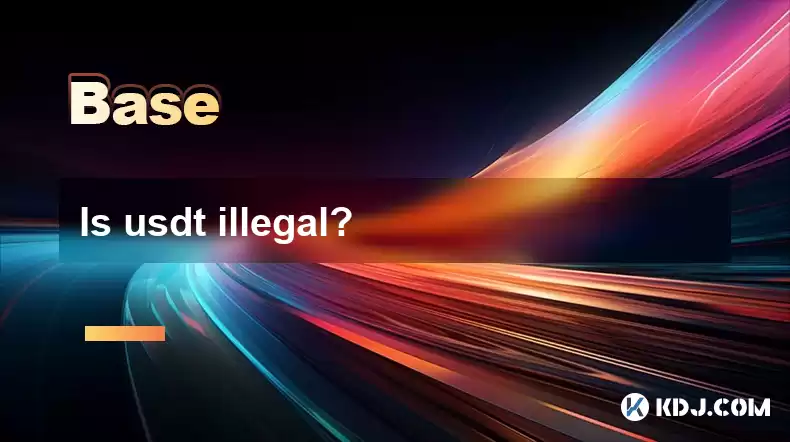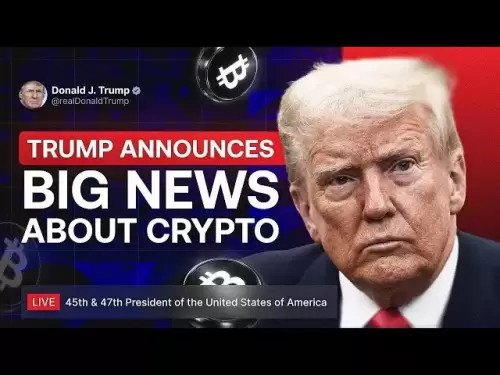-
 Bitcoin
Bitcoin $114100
-0.14% -
 Ethereum
Ethereum $3635
-0.73% -
 XRP
XRP $2.949
-2.85% -
 Tether USDt
Tether USDt $0.9999
-0.03% -
 BNB
BNB $760.3
-0.78% -
 Solana
Solana $163.8
-2.77% -
 USDC
USDC $0.9998
-0.04% -
 TRON
TRON $0.3323
-0.57% -
 Dogecoin
Dogecoin $0.2004
-2.99% -
 Cardano
Cardano $0.7245
-2.87% -
 Hyperliquid
Hyperliquid $37.52
-3.75% -
 Stellar
Stellar $0.3915
-3.58% -
 Sui
Sui $3.416
-2.20% -
 Bitcoin Cash
Bitcoin Cash $559.5
-0.84% -
 Chainlink
Chainlink $16.41
-2.16% -
 Hedera
Hedera $0.2406
-1.78% -
 Ethena USDe
Ethena USDe $1.001
0.00% -
 Avalanche
Avalanche $22.13
-1.98% -
 Litecoin
Litecoin $117.8
-4.32% -
 UNUS SED LEO
UNUS SED LEO $8.989
0.01% -
 Toncoin
Toncoin $3.183
-5.09% -
 Shiba Inu
Shiba Inu $0.00001214
-1.97% -
 Uniswap
Uniswap $9.654
-1.71% -
 Polkadot
Polkadot $3.616
-1.18% -
 Monero
Monero $291.6
-2.66% -
 Dai
Dai $0.9999
0.00% -
 Bitget Token
Bitget Token $4.310
-1.10% -
 Cronos
Cronos $0.1382
-1.93% -
 Pepe
Pepe $0.00001021
-3.40% -
 Aave
Aave $257.9
-1.42%
Is usdt illegal?
USDT's legality varies globally, with some jurisdictions classifying it as a digital asset subject to specific frameworks while others may consider it a commodity or cryptocurrency facing regulatory scrutiny.
Jan 26, 2025 at 11:30 pm

Is USDT Illegal? An in-depth Investigation into the Legality and Controversies Surrounding USDT
Key Points:
*USDT's Legal Status: Navigating the Complex Regulatory Landscape
*Potential Risks and Regulatory Concerns Associated with USDT
*Alternative Stablecoins and their Role in the Cryptocurrency Ecosystem
*Legal Precedents and International Perspectives on USDT
*Navigating the Legal and Regulatory Framework for USDT in the United States
*International Perspectives on the Legality of USDT: A Comparative Analysis
*USDT's Legal Status: A Comparative Overview of Major Jurisdictions
USDT's Legal Status: Navigating the Complex Regulatory Landscape
The legal status of USDT, the widely used stablecoin pegged to the US dollar, is a subject of ongoing debate and scrutiny. As a digital asset backed by reserves of fiat currency, USDT has raised questions regarding its legal classification, regulatory oversight, and potential risks to investors.
To understand the legality of USDT, it is crucial to examine the regulatory landscape governing cryptocurrencies and stablecoins in different jurisdictions. While some countries have implemented comprehensive frameworks for digital assets, others are still grappling with the complexities of regulating this emerging asset class.
The legal status of USDT varies across jurisdictions, depending on the specific regulatory approaches adopted by each country. In the United States, for example, USDT is not considered a security under federal law but may be subject to various regulations at the state level.
In other jurisdictions, such as the United Kingdom and Japan, stablecoins like USDT are generally recognized as digital assets and subject to specific regulatory frameworks. Understanding the legal status of USDT in each jurisdiction is essential for businesses and investors involved in transactions involving this stablecoin.
Potential Risks and Regulatory Concerns Associated with USDT
USDT, despite its widespread adoption and market dominance, has not escaped regulatory scrutiny. Concerns have been raised regarding the stablecoin's reserves, transparency, and potential risks to investors.
One of the primary concerns is the composition of USDT's reserves. Tether, the company behind USDT, has faced criticism for a lack of transparency in disclosing the exact composition of the assets backing the stablecoin. This has raised concerns about the stability and reliability of USDT's peg to the US dollar.
Regulatory authorities have also expressed concerns about the potential risks USDT poses to investors. The stablecoin's widespread use and dominance in the cryptocurrency market raise systemic risk concerns, especially if USDT loses its peg to the US dollar. This could lead to significant market volatility and losses for investors holding USDT.
In response to these concerns, Tether has taken steps to increase transparency and address regulatory scrutiny. The company has provided more detailed disclosures on the composition of USDT's reserves and engaged with regulators to address concerns over the stability and risk associated with the stablecoin.
Alternative Stablecoins and their Role in the Cryptocurrency Ecosystem
Although USDT remains the most popular stablecoin, it is not the only option available to investors and businesses. Alternative stablecoins, such as USDC, BUSD, and DAI, offer different approaches to maintaining a peg to the US dollar and address some of the concerns raised about USDT.
USDC, for example, is issued by Circle, a regulated financial institution, and its reserves are subject to regular audits. BUSD is issued by Binance, one of the largest cryptocurrency exchanges, and is backed by a combination of cash and US Treasury bonds held in segregated accounts. DAI is a decentralized stablecoin backed by a pool of collateralized cryptocurrencies, providing an alternative to centralized stablecoins.
The emergence of alternative stablecoins increases choice for investors and provides different ways to manage risks associated with USDT. These stablecoins offer varying levels of transparency, regulatory oversight, and risk profiles, allowing users to select the stablecoin that best meets their needs and preferences.
Legal Precedents and International Perspectives on USDT
The legal status and regulatory treatment of USDT have been the subject of legal challenges and international scrutiny. In 2019, the New York Attorney General's office filed a lawsuit against Tether, alleging that the company misled investors about the reserves backing USDT. The lawsuit was settled in 2021, with Tether agreeing to pay $18.5 million in penalties.
On the international front, regulators and law enforcement agencies in various jurisdictions have investigated USDT's operations due to concerns over market manipulation and the potential use of the stablecoin for illicit activities.
The legal precedents and international perspectives on USDT provide insights into the ongoing regulatory challenges and the potential risks associated with the stablecoin. Understanding the legal landscape and regulatory approaches in different jurisdictions is crucial for businesses and investors involved in transactions involving USDT.
Navigating the Legal and Regulatory Framework for USDT in the United States
In the United States, the legal and regulatory framework for USDT is evolving amidst ongoing scrutiny. The Commodity Futures Trading Commission (CFTC) has classified USDT as a commodity and has taken enforcement actions against Tether for allegedly manipulating the price of Bitcoin. The Securities and Exchange Commission (SEC) has also taken an interest in USDT and may classify it as a security in the future.
To navigate the legal and regulatory framework in the United States, businesses and investors should stay informed about regulatory developments and consult with legal counsel to understand the potential risks and obligations associated with USDT.
International Perspectives on the Legality of USDT: A Comparative Analysis
The legal status of USDT varies across jurisdictions due to different regulatory approaches to digital assets. In the United Kingdom, for example, USDT is recognized as a digital asset and is subject to the regulatory oversight of the Financial Conduct Authority (FCA). In Japan, USDT is considered a cryptocurrency and is regulated under the Payment Services Act.
Understanding the international perspectives on the legality of USDT is important for businesses and investors operating across borders. By comparing the regulatory frameworks and approaches in different jurisdictions, they can assess the legal risks and compliance requirements associated with using USDT in specific jurisdictions.
USDT's Legal Status: A Comparative Overview of Major Jurisdictions
| Country/Region | Regulatory Framework | Key Regulatory Authority | USDT Classification |
| United States | Evolving, subject to CFTC and SEC scrutiny | Commodity Futures Trading Commission (CFTC), Securities and Exchange Commission (SEC) | Commodity (CFTC) |
| United Kingdom | Cryptoasset regulation | Financial Conduct Authority (FCA) | Digital asset |
| Japan | Payment Services Act | Financial Services Agency (FSA) | Cryptocurrency |
| European Union | Markets in Crypto Assets (MiCA) | European Securities and Markets Authority (ESMA) | Crypto-asset (subject to MiCA) |
This table provides a comparative overview of the legal status of USDT in major jurisdictions, highlighting the regulatory frameworks, key regulatory authorities, and classification of USDT in each jurisdiction.
FAQs:
- Is USDT illegal?
The legality of USDT depends on the regulatory framework in each jurisdiction. In some jurisdictions, such as the United States, USDT is not considered a security under federal law but may be subject to regulations at the state level. In other jurisdictions, USDT is recognized as a digital asset or cryptocurrency and subject to specific regulatory frameworks. - What are the potential risks associated with USDT?
Concerns have been raised regarding USDT's reserves, transparency, and potential risks to investors. Tether, the company behind USDT, has faced criticism for a lack of transparency in disclosing the exact composition of the assets backing the stablecoin, raising concerns about the stability and reliability of USDT's peg to the US dollar. - What alternative stablecoins are available?
Alternative stablecoins, such as USDC, BUSD, and DAI, offer different approaches to maintaining a peg to the US dollar and address some of the concerns raised about USDT. USDC is issued by a regulated financial institution and its reserves are subject to regular audits, BUSD is backed by a combination of cash and US Treasury bonds, and DAI is a decentralized stablecoin backed by a pool of collateralized cryptocurrencies. - How do I stay informed about regulatory developments related to USDT?
To stay informed about regulatory developments related to USDT, it is recommended to follow official announcements from relevant regulatory authorities, industry news sources, and legal counsel specializing in cryptocurrency regulation.
Disclaimer:info@kdj.com
The information provided is not trading advice. kdj.com does not assume any responsibility for any investments made based on the information provided in this article. Cryptocurrencies are highly volatile and it is highly recommended that you invest with caution after thorough research!
If you believe that the content used on this website infringes your copyright, please contact us immediately (info@kdj.com) and we will delete it promptly.
- Acapulco Crafts in Crisis: Sales Plummet, Artisans Struggle
- 2025-08-06 14:30:12
- SEC, Crypto & Bitwise CIO: A New Dawn?
- 2025-08-06 14:35:11
- Coinbase, Financing, and the Crypto Market: Navigating Choppy Waters in NYC Style
- 2025-08-06 12:50:11
- Bitcoin in Indonesia: Crypto Education and Economic Strategy
- 2025-08-06 12:50:11
- DeriW Mainnet: Zero Gas Fees Revolutionize On-Chain Derivatives Trading
- 2025-08-06 10:30:11
- IOTA, Cloud Mining, and Eco-Friendly Crypto: A New York Investor's Take
- 2025-08-06 10:30:11
Related knowledge

What is the difference between CeFi and DeFi?
Jul 22,2025 at 12:28am
Understanding CeFi and DeFiIn the world of cryptocurrency, CeFi (Centralized Finance) and DeFi (Decentralized Finance) represent two distinct financia...

How to qualify for potential crypto airdrops?
Jul 23,2025 at 06:49am
Understanding What Crypto Airdrops AreCrypto airdrops refer to the distribution of free tokens or coins to a large number of wallet addresses, often u...

What is a crypto "airdrop farmer"?
Jul 24,2025 at 10:22pm
Understanding the Role of a Crypto 'Airdrop Farmer'A crypto 'airdrop farmer' refers to an individual who actively participates in cryptocurrency airdr...

What is the difference between a sidechain and a Layer 2?
Jul 20,2025 at 11:35pm
Understanding the Concept of SidechainsA sidechain is a separate blockchain that runs parallel to the main blockchain, typically the mainnet of a cryp...

What is the Inter-Blockchain Communication Protocol (IBC)?
Jul 19,2025 at 10:43am
Understanding the Inter-Blockchain Communication Protocol (IBC)The Inter-Blockchain Communication Protocol (IBC) is a cross-chain communication protoc...

How does sharding improve scalability?
Jul 20,2025 at 01:21am
Understanding Sharding in BlockchainSharding is a database partitioning technique that is increasingly being adopted in blockchain technology to enhan...

What is the difference between CeFi and DeFi?
Jul 22,2025 at 12:28am
Understanding CeFi and DeFiIn the world of cryptocurrency, CeFi (Centralized Finance) and DeFi (Decentralized Finance) represent two distinct financia...

How to qualify for potential crypto airdrops?
Jul 23,2025 at 06:49am
Understanding What Crypto Airdrops AreCrypto airdrops refer to the distribution of free tokens or coins to a large number of wallet addresses, often u...

What is a crypto "airdrop farmer"?
Jul 24,2025 at 10:22pm
Understanding the Role of a Crypto 'Airdrop Farmer'A crypto 'airdrop farmer' refers to an individual who actively participates in cryptocurrency airdr...

What is the difference between a sidechain and a Layer 2?
Jul 20,2025 at 11:35pm
Understanding the Concept of SidechainsA sidechain is a separate blockchain that runs parallel to the main blockchain, typically the mainnet of a cryp...

What is the Inter-Blockchain Communication Protocol (IBC)?
Jul 19,2025 at 10:43am
Understanding the Inter-Blockchain Communication Protocol (IBC)The Inter-Blockchain Communication Protocol (IBC) is a cross-chain communication protoc...

How does sharding improve scalability?
Jul 20,2025 at 01:21am
Understanding Sharding in BlockchainSharding is a database partitioning technique that is increasingly being adopted in blockchain technology to enhan...
See all articles

























































































